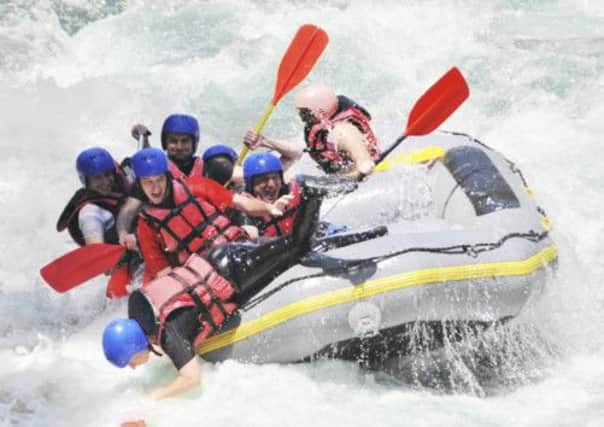Is safety culture making men more risk averse?


Conducted by a team at St Andrews University, it seemed to show that 20-something men today are significantly less willing to get involved in risky activities than the 20-somethings of their fathers’ generation. My gut instinct was that this must surely be nonsense, so I spent an hour or so rubbishing the findings. “After decades in which so-called extreme sports have enjoyed massive spikes in popularity,” I blustered, unscientifically, “can it really also be true that 20-something men have become more afraid to take risks?”
Then, the following Saturday, I began to pick holes in what I’d written. I was at a whitewater rafting stag do on a well-used stretch of a famous Scottish river – so well-used, in fact, that I’d been rafting down it with the same company on another stag do a couple of years before. I knew the guides to be excellent – highly professional and extremely safety-conscious – so even though I’m utterly clueless about rivers, during the course of our supposedly white-knuckle adventure I didn’t have much more adrenaline coursing through my veins than I would have done during an average day in the office. In fact, compared to a day in the office, I found the whole experience very relaxing. Our guide told us when to paddle forwards and when to paddle backwards, when to shuffle over to the left of the boat and when to shuffle over to the right. We didn’t need to understand how the river worked or how to steer our giant blue craft through the raging rapids – it was the guide’s job to worry about the technical side of things. All that was required from us was mindless obedience, big smiles for the cameras and a bit of hanging on tight when things occasionally got serious.
Advertisement
Hide AdTowards the end of our voyage, all the boats in our little flotilla tied up beside a roaring double-waterfall so the guides could talk us through the gameplan for this not-inconsiderable final obstacle (paddle really hard, then hang on); and it was at this point that I started to wonder if we’d all still be looking quite so casual if we’d arrived here on our own. Without an experienced river-runner to steer us to safety, would we still have the cojones to tackle what lay ahead? Or would we choose instead to portage the raft through the forest and launch it on the loch on the other side? I had a surreptitious glance around our group and calculated that, after a short, face-saving debate, in such a situation we would almost certainly go for the raft-lugging option.
And then I remembered what I’d written about the St Andrews study. My argument had been that young men today must be less risk-averse than young men in the 1970s because extreme sports are now so much more popular, but it hadn’t occurred to me that doing these sports now is a lot less risky than it was back then (and is perceived to be less risky, too) because so many people nowadays employ qualified guides or instructors from day one. If you go whitewater rafting with a guide, you’re not really taking responsibility for your own safety – you’re paying for somebody else to take on that responsibility instead. So yes, loads more people are getting involved in extreme sports, but how many progress to the point where they’re operating independently? And how many simply sample these activities in a safe, controlled environment? Sam Christopherson of C2C surf school in Dunbar told me recently that of all the people he teaches to surf, perhaps one in ten ends up buying a board and wetsuit and starts surfing on their own. If they’d been asked to complete the questionnaire used by the St Andrews researchers, all Sam’s students would have answered yes to the “I would like to try surfboard riding” question, marking them out as risk-takers. Yet only 10 per cent would ever take things a step further and paddle out to sea without a qualified lifesaver on hand to rescue them if something went wrong.
So I guess my extreme sports argument is a dud. I still don’t think today’s 20-something men are more risk averse than their fathers were at their age, though. I just need to come up with a better way of proving it.